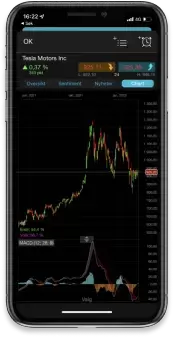In the absence of UK markets, European markets got off to a slow start to the new week, finishing more or less unchanged from their Friday close, and a very solid US jobs report. European markets look set to open slightly higher this morning.
US markets also got off to an indifferent start to the week after a strong finish on Friday, with the focus now shifting to Wednesday’s April CPI inflation data, and a sense that for all the expectation that last week’s US Federal Reserve rate hike might be the last, the strength of the US economy might mean that there may be one left to come.
If Friday’s US jobs report told us anything, it's that for all the concerns about US regional banks, the US labour market remains tight and there is still inflationary pressure within the underlying economy. To that end, US 2-year yields rallied from lows of 3.65% on Thursday, to back above 4% again yesterday.
The US dollar got an initial lift in the wake of Friday’s non-farm payrolls report, but struggled to hang on to most of its gains, remaining to all intents and purposes rangebound near to its recent lows. Not only did Friday’s jobs numbers show a US economy that is still creating jobs at a decent clip, with 253,000 jobs added and comfortably beating expectations, but they also saw the unemployment rate fall to 3.4%, even as wages went up to 4.4%.
While some have suggested that the report was overshadowed by a negative -149,000 adjustment to the previous two months' data, which may have taken some of the gloss over the broader numbers, they don’t support the idea that the US economy is struggling, particularly when there are still over 9.5m vacancies. What the numbers do suggest is that the US labour market remains resilient, and pushes back on the idea of rate cuts in the short term, although it's undeniable that financial conditions are starting to tighten considerably, due to the recent banking stresses, as yesterday’s Federal Reserve financial stability report showed.
In the short term, this suggests the outlook, while challenging, just about remains positive for the wider global economy, as does the continued reopening of the Chinese economy after months of Covid-19 restrictions. Recent earnings data, particularly from the luxury sector, appears to have shown that demand for certain goods within China has rebounded quite strongly. In an encouraging development for the global economy last month, the March China trade numbers showed that the Chinese economy started to gain momentum in the aftermath of Chinese New Year, as exports surged by 14.8%, the first rise since September, while imports declined a less than expected -1.4%. These numbers suggested that domestic demand was starting to recover after months of lockdowns, and recent PMI data appears to have borne that out.
The wider question is whether this trend is sustainable or simply a case of catch-up demand or rebound spending. Exports for April were expected to slow to 8%, but came in at 8.5%, while imports were expected to come in flat, and declined by 7.9%, although some of that may be down to lower prices in some areas, rather than lower volumes.
EUR/USD – slipped back to the bottom end of the recent range on Friday but 1.0940 remained intact, with the recent highs just below 1.1100 continuing to cap the upside. A break above 1.1120 is needed to signal further gains towards 1.1200. The bottom of the range remains at the 1.0940 level. Below 1.0940 retargets the 1.0870 level.
GBP/USD – pushed up to a new 12-month high at 1.2669 yesterday with next resistance at 1.2756 which is 61.8% retracement of the 1.4250/1.0340 down move. Support now at 1.2530.
EUR/GBP – has retested the recent lows at 0.8710, with a break below the 0.8700 area potentially opening up the risk of a move towards the 0.8640 area. We need to see a recovery back above 0.8760 to stabilise and signal a return to the 0.8820 area.
USD/JPY – slipped back to the 133.50 area last week and are currently squeezing higher again with next resistance at 136.20. A move back above 136.20 retargets the 200-day SMA at 137.10.
Disclaimer: CMC Markets is an execution-only service provider. The material (whether or not it states any opinions) is for general information purposes only, and does not take into account your personal circumstances or objectives. Nothing in this material is (or should be considered to be) financial, investment or other advice on which reliance should be placed. No opinion given in the material constitutes a recommendation by CMC Markets or the author that any particular investment, security, transaction or investment strategy is suitable for any specific person. The material has not been prepared in accordance with legal requirements designed to promote the independence of investment research. Although we are not specifically prevented from dealing before providing this material, we do not seek to take advantage of the material prior to its dissemination.







